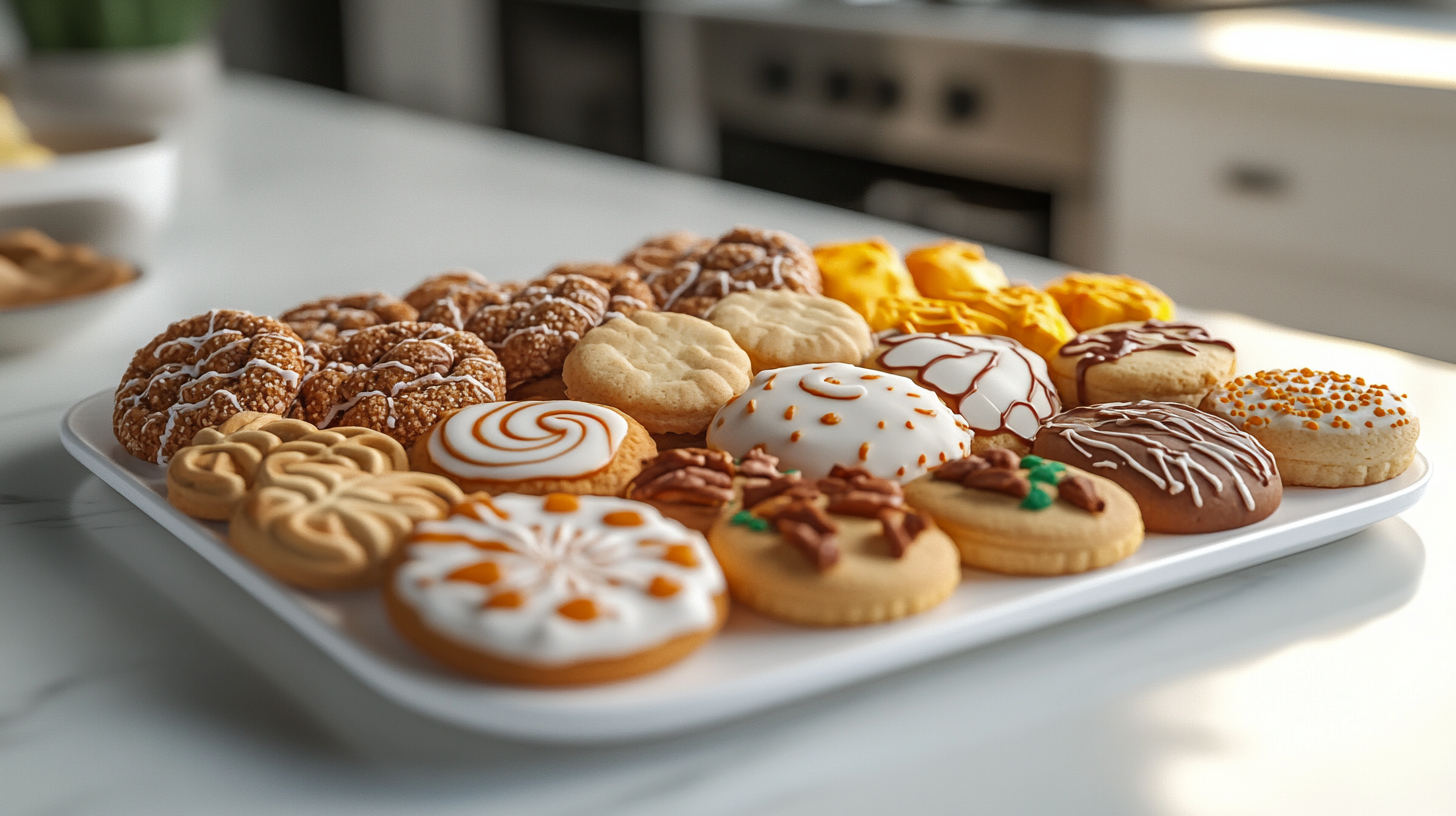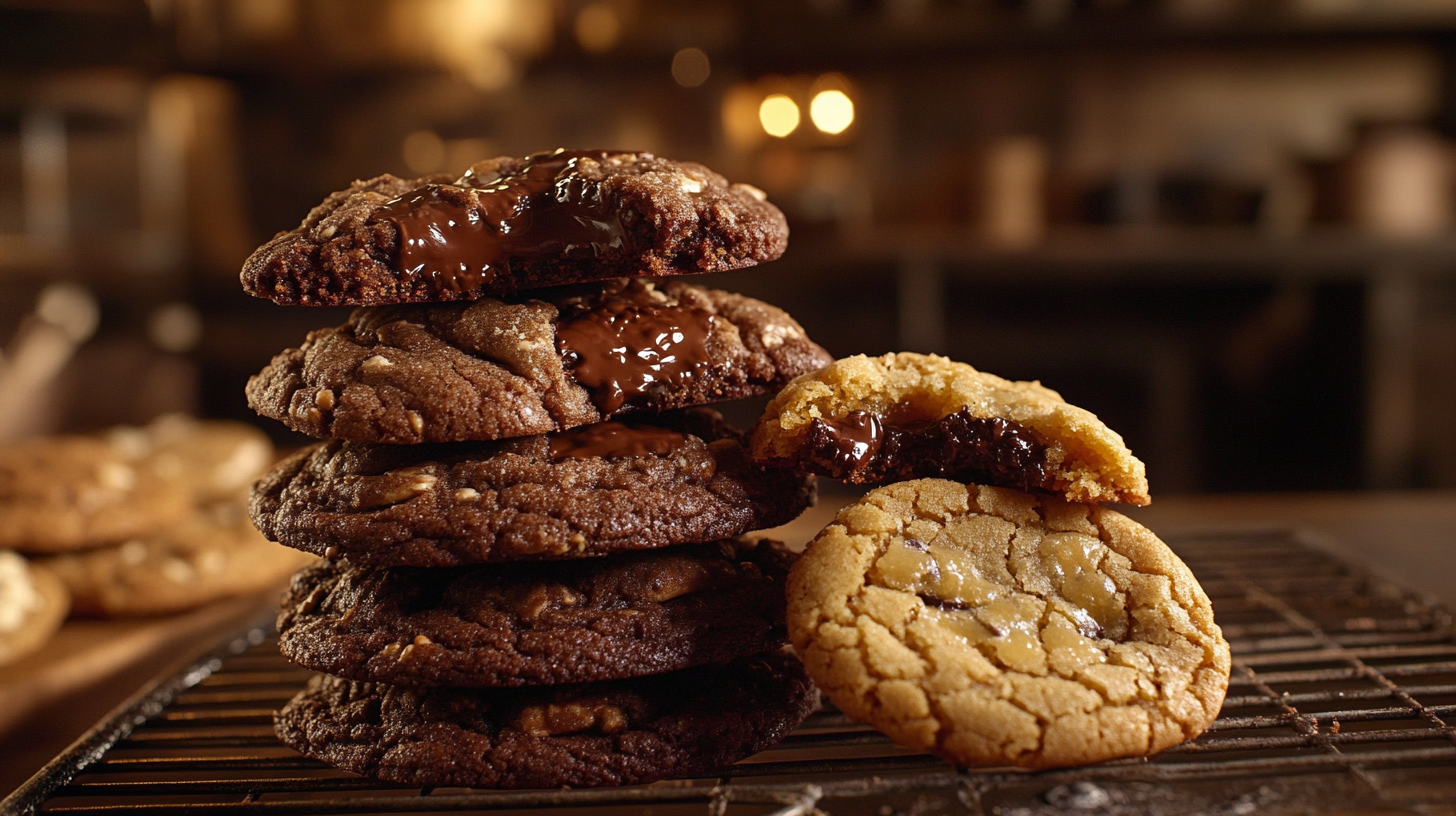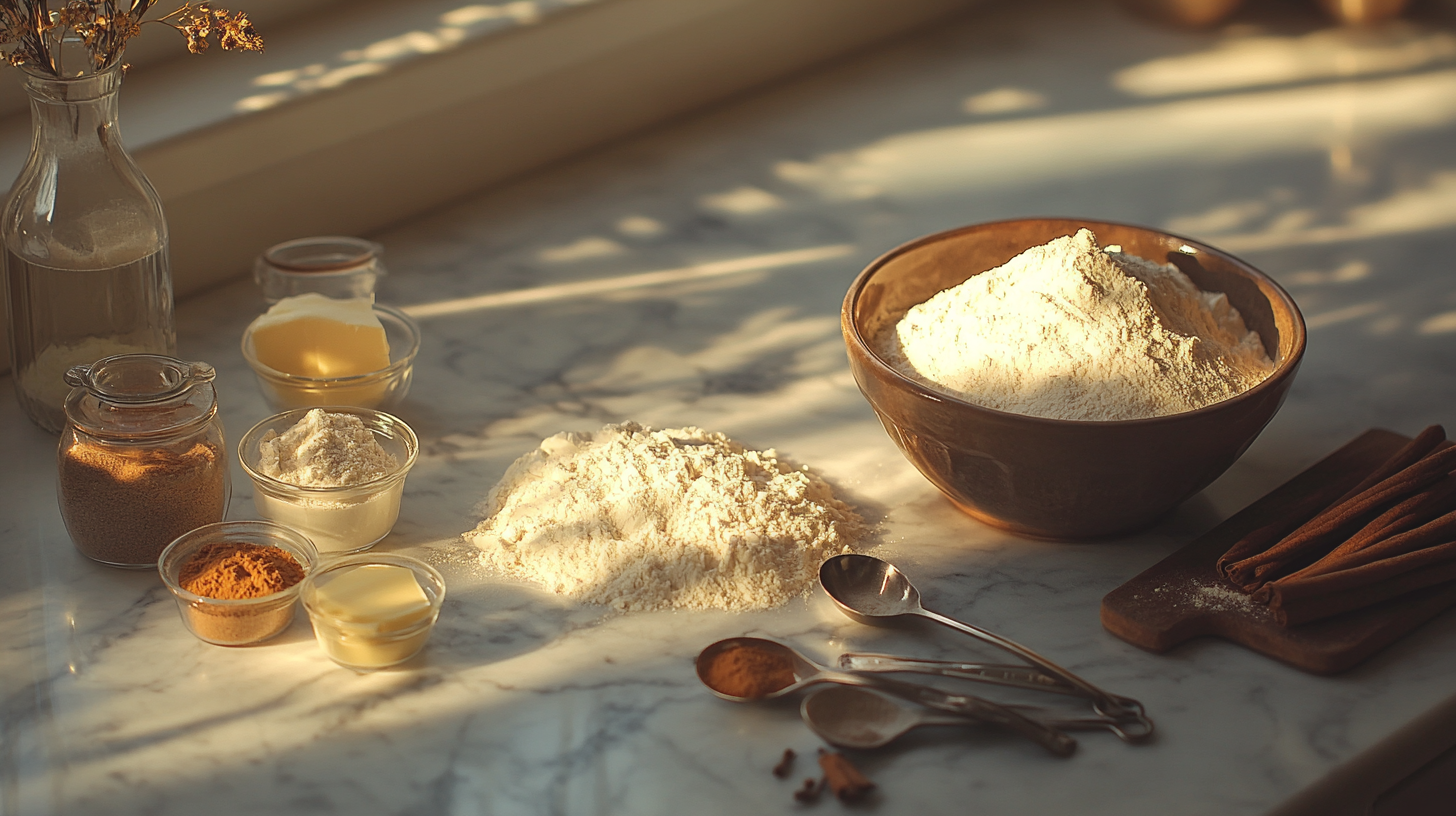
Table of Contents
What Makes a Cookie Recipe Unique?
Regarding cookie recipes unique refers to those that stand out from the crowd, offering something different in taste, texture, or appearance. These cookies often push the boundaries of traditional recipes by incorporating unexpected ingredients, creative flavor combinations, or alternative preparation methods. What makes a cookie unique can vary, but it often involves a balance of innovation and quality that excites the senses and offers a new experience.
Defining “Unique” in Cookie Recipes
A unique cookie recipe surprises or delights in some way. Several factors can define it:
- Ingredients: Uncommon or unusual ingredients that add distinct flavor or texture.
- Preparation Method: A unique approach to mixing, shaping, or baking the cookies.
- Visual Appeal: Cookies that stand out in color, shape, or size.
- Flavor: A blend of ingredients that creates a flavor profile different from classic cookies.
- Cultural Influence: Incorporating flavors or techniques from different culinary traditions.
Key Ingredients that Define Uniqueness
The uniqueness of a cookie often starts with the ingredients used. Here are a few examples of key ingredients that can make a cookie recipe stand out:
- Exotic spices: Ingredients like cardamom, saffron, or cinnamon can add a decadent, aromatic twist.
- Unusual sweeteners: Instead of just sugar, recipes that use honey, maple syrup, molasses, or even coconut sugar can create a distinctive flavor.
- Alternative flours: Almond flour, coconut flour, or gluten-free blends can introduce a new texture and taste.
- Unexpected mix-ins: Ingredients like candied ginger, dried fruit, nuts, or even savory elements such as cheese or herbs can add an element of surprise.
- Superfoods: Adding ingredients like chia seeds, flax seeds, or spirulina gives cookies a health-conscious spin.
Creative Flavor Combinations
One of the most exciting aspects of unique cookies is the combination of flavors not typically found in traditional recipes. Some creative pairings that can make a cookie special include:
- Salted caramel and dark chocolate: The sweet and salty balance is always a crowd-pleaser.
- Lemon and lavender: A refreshing, floral flavor profile that’s delicate yet distinct.
- Chili and chocolate: The heat of chili combined with the richness of chocolate makes for a complex, unexpected treat.
- Peanut butter and pretzels: The crunch of pretzels with creamy peanut butter offers a delightful texture contrast.
- Maple and bacon: Combining the sweetness of maple with the savory smokiness of bacon creates a unique cookie that plays with sweet and salty elements.
Types of Unique Cookie Recipes
Cookie recipes come in many forms, and there’s always room to put a creative spin on the classics, explore international flavors, or accommodate special dietary needs. Here are a few types of unique cookie recipes that can offer something new for every taste and preference.

Classic Cookies with a Twist
Sometimes, the best way to make a cookie unique is by taking a classic recipe and adding a modern or unexpected element. Here are a few examples of how to twist classic cookie recipes:
- Chocolate Chip Cookies with Sea Salt: To enhance the flavor of freshly baked chocolate chip cookies, sprinkle a sprinkle of flaky sea salt on top.
- Oatmeal Raisin Cookies with Coconut: Add shredded coconut or coconut flakes to give the traditional oatmeal raisin cookie a tropical twist.
- Peanut Butter Cookies with Pretzels: Mix crushed pretzels with the peanut butter dough to give the cookies a salty, crunchy texture.
- Snickerdoodle with Cinnamon Sugar Swirl: For extra flavor, twist the classic snickerdoodle cookie by swirling a cinnamon-sugar mix inside the dough before baking.
- Sugar Cookies with Lemon Zest: Add lemon zest or extract to a classic sugar cookie for a fresh, tangy touch.
International Cookie Recipes to Try
Exploring international cookie recipes is a fantastic way to enjoy unique flavors and baking techniques worldwide. Here are a few global cookie recipes to try:
- Italian Biscotti: These twice-baked, crunchy cookies are typically flavored with almonds, hazelnuts, or anise, making them perfect for dunking in coffee or tea.
- French Madeleines are soft, shell-shaped cookies with a delicate texture. They are often flavored with lemon or vanilla and served with a dusting of powdered sugar.
- German Lebkuchen: A spiced honey cookie similar to gingerbread, often decorated with icing or glazed with a sugar coating.
- Mexican Wedding Cookies: These delicate, melt-in-your-mouth cookies are made with ground nuts like pecans or almonds dusted with powdered sugar.
- Turkish Kadayif Cookies: A pastry-like cookie made with shredded phyllo dough, filled with walnuts, and soaked in a sweet syrup for a delightful crunch and sweetness.
Vegan and Gluten-Free Unique Cookie Recipes
Vegan and gluten-free cookies can still be unique and delicious for those with dietary restrictions or preferences. Here are a few ideas for creating these special cookies:
- Vegan Chocolate Chip Cookies: Replace butter with coconut oil or plant-based margarine, and use a flaxseed or chia seed egg substitute to create a chewy, dairy-free cookie.
- Gluten-Free Almond Flour Cookies: Almond flour can be used instead of wheat flour for a rich, nutty flavor and chewy texture, perfect for gluten-free cookie lovers.
- Vegan Matcha Cookies: Matcha powder adds a unique, earthy flavor and vibrant green color to a vegan cookie recipe.
- Gluten-Free Peanut Butter Oatmeal Cookies: You can create a rich, chewy cookie without any wheat flour by combining gluten-free oats with peanut butter.
- Vegan Coconut Macaroons: Made with shredded coconut, egg replacer, and sweeteners like maple syrup, these cookies are naturally gluten-free and have a chewy, coconutty flavor.
Essential Baking Tips for Unique Cookie Recipes
Follow some key baking tips to ensure that your unique cookie recipes turn out perfectly. These will help ensure that your cookies have the right texture, flavor, and appearance. Here are a few essential tips to keep in mind when baking cookies.
Temperature and Baking Time
The oven temperature and baking time can make or break your cookie recipe. Here’s how to get it just right:
- Preheat Your Oven: Preheat your oven to the correct temperature before placing your cookies inside. This ensures even baking from the start.
- Use an Oven Thermometer: Oven temperatures can sometimes be inaccurate, so an oven thermometer can help you ensure the oven is at the correct temperature.
- Cookie Dough Temperature: Chill your dough for about 30 minutes before baking for thicker cookies. This will help the cookies hold their shape and prevent them from spreading too much.
- Baking Time: Watch your cookies closely as they bake. To keep chewy cookies soft, bake for a slightly shorter time. To bake crispier cookies, bake for a little longer. Remember that cookies will continue to cook on the baking sheet once you remove them from the oven, so underbake slightly for softer cookies.
- Oven Placement: Place your cookie sheets in the middle of the oven to ensure even heat circulation. If your oven has hot spots, rotate the trays halfway through baking.
How to Achieve the Perfect Texture
The texture of your cookies is often what makes them truly unique. Achieving the perfect texture requires attention to the right ingredients and techniques:
- Butter vs. Margarine: Butter provides a richer flavor and firmer texture, while margarine or shortening results in softer cookies. For chewier cookies, use more butter or coconut oil. For crisper cookies, use more margarine or shortening.
- Flour Type: The type of flour you use can affect the texture. Cake flour is used for softer cookies, while all-purpose flour gives cookies a more balanced texture. If you’re looking for a chewy texture, add cornstarch or use bread flour.
- Mixing the Dough: Overmixing the cookie dough can lead to tough cookies, while under-mixing can cause uneven texture. Mix until just combined to avoid these issues.
- Add-ins: The ingredients you mix into your cookie dough, like nuts, chocolate chips, or dried fruit, can impact the texture. Use softer add-ins that melt slightly during baking, like peanut butter or caramel, for chewy cookies. For crunchier cookies, use chunky additions like nuts or pretzels.
- Baking Sheets: For a crispier cookie, use a shiny aluminum baking sheet reflecting heat. For softer cookies, opt for a darker baking sheet that retains heat more efficiently.
- Resting the Dough: Letting your cookie dough rest for at least 30 minutes (up to 24 hours in the fridge) allows the flour to fully hydrate, resulting in a better texture and more intense flavor.
Key Ingredients to Elevate Your Cookie Recipes
Your chosen ingredients can significantly impact flavor, texture, and overall appeal when making your cookie recipes unique. By incorporating specialty flours and flavor enhancers, you can elevate even the most basic cookie recipe into something extraordinary. Here are some key ingredients to consider for a more unique cookie experience.

Specialty Flours for Unique Flavors
The type of flour you use can dramatically affect the texture and flavor of your cookies. Here are some specialty flours that can add a unique twist to your cookie recipes:
- Almond Flour: Made from finely ground almonds, almond flour adds a rich, nutty flavor to cookies. It also results in a slightly denser, moister cookie. Almond flour is often used in gluten-free baking but can be combined with traditional flours for a unique texture.
- Coconut Flour: This flour is made from dried coconut meat and is naturally gluten-free. It absorbs much moisture, so coconut flour recipes require more liquid. It imparts a light coconut flavor to cookies and creates a soft, tender texture.
- Rice Flour: A common ingredient in gluten-free baking, rice flour adds a slightly gritty texture to cookies. It can contribute to a crispier, crunchier cookie when combined with other gluten-free flour like potato starch or almond flour.
- Spelled Flour: A whole grain flour often used as an alternative to regular wheat flour, spelled adds a mild, nutty flavor and a slightly denser texture. It can be used to give cookies a more rustic, hearty feel.
- Oat Flour: Ground from oats, oat flour gives cookies a mild, sweet flavor and adds a soft, chewy texture. It’s commonly used in oatmeal cookies but can be used in any cookie recipe for a unique twist.
- Chickpea Flour: This flour is made from ground chickpeas and has a slightly earthy flavor. It’s high in protein and can be used in gluten-free baking to add structure and a unique taste to cookies.
Flavor Enhancers: Spices, Herbs, and Extracts
Spices, herbs, and extracts are excellent tools to enhance cookie flavors, giving them depth and uniqueness. Here are some flavor enhancers to consider:
- Cinnamon adds warmth and sweetness, pairing well with chocolate, nuts, and fruits like apples or pears. For a cozy twist, use it in Snickerdoodles or chocolate chip cookies.
- Nutmeg is a slightly sweet, earthy spice that works well with cinnamon. It is perfect for holidays or spiced cookies like gingerbread.
- Cardamom: Known for its citrusy, aromatic flavor, cardamom adds an exotic touch to shortbread or sugar cookies.
- Ginger: Fresh or ground, ginger adds a zesty kick and is excellent in gingerbread or with chocolate and citrus cookies.
- Lavender: A floral herb with a subtle flavor, lavender pairs well with lemon, honey, or vanilla for a soothing, unique cookie. Use sparingly as its flavor is intense.
- Rosemary: Typically used in savory dishes, rosemary can provide an intriguing, pine-like flavor in sweet cookies, especially when paired with lemon or chocolate.
- Vanilla Extract: A classic ingredient that can be enhanced with other extracts like almond, hazelnut, or orange for a more complex flavor.
- Espresso Powder: A small amount intensifies the flavor of chocolate, enriching cookies or brownies without making them taste like coffee.
- Citrus Zest: Lemon, orange, or lime zest adds a fresh, tangy flavor that works well with chocolate, berries, and nuts, brightening simple sugar or shortbread cookies.
How to Customize Cookie Recipes
Customizing cookie recipes allows you to create treats tailored to your tastes and dietary needs. Here are some ways to adjust texture, flavor, and ingredients to make cookies uniquely yours.
Adjusting Texture
- Chewy: For moisture, use more brown sugar and an extra egg yolk. Chill the dough to prevent excessive spreading.
- Crispy: Increase white sugar and butter. Bake a little longer, and use margarine or shortening for a crunchier result.
- Soft: Add more butter or coconut oil and extra egg yolks. For a tender texture, you can also use cake flour.
- Thick vs. Thin: For thicker cookies, chill the dough and increase the flour. For thinner cookies, reduce the flour and lightly flatten the dough balls.
Adjusting Flavor
- Sweetness: Adjust sugar based on preference. Reduce sugar for less sweetness or increase it for more. Keep in mind that too much sugar can affect texture.
- Spices: Adjust the spice levels to your liking. Add more cinnamon, or experiment with spices like cardamom, nutmeg, or ginger.
- Extracts: To enhance flavor, use vanilla, almond, or citrus extracts. For a twist, try adding a splash of hazelnut or mint.
Unique Ingredients
- Mix-ins: You can add chocolate chips, dried fruit, nuts, or even savory items like pretzels or shredded coconut.
- Flours: Try almond, coconut, or oat flour for a unique flavor or gluten-free option.
- Sweeteners: Substitute refined sugar with maple syrup, honey, or coconut sugar for a richer flavor.
Dietary Modifications
- Vegan: Use plant-based butter and egg substitutes like flaxseeds or chia seeds.
- Gluten-Free: Use gluten-free flours and check mix-ins for gluten.
- Low-Sugar: Substitute with natural sweeteners like stevia or monk fruit.
FAQs About Unique Cookie Recipes
How Can I Make My Cookies More Unique?
Experiment with unusual red:
- Experimentative flavor combinations to make your cookies stand out.
- Ry uses specialty flours like almond or coconut flour for different textures and flavors.
- Dd unexpected mix-ins like dried fruits, nuts, or savory items like pretzels or cheese.
Sprinkle with spices like cardamom, lavender, or cinnamon to give your cookies a distinctive flavor. You can also switch your sweeteners to honey, maple syrup, or coconut instead of regular sugar.
What Are Some Must-Have Ingredients for Unique Cookies?
To elevate your cookie recipes, keep these ingredients on hand:
- Specialty Flours: Almond, coconut, or oat flour can create unique textures.
- Spices & Extracts: Cinnamon, cardamom, ginger, and lavender can add depth to flavors. Vanilla and almond extracts are essential for more decadent cookies.
- Alternative Sweeteners: Maple syrup, honey, and coconut sugar offer unique sweetness profiles.
- Mix-ins: Chocolate chips, dried fruits, nuts, coconut, or pretzels add crunch and flavor contrasts.
- Butter or Oils: For a rich, flavorful base, butter or coconut oil is a must.
How Do I Get My Cookies to Have a Chewy Texture?
To achieve chewy cookies:
- Use more brown sugar, which retains moisture better than white sugar.
- Add extra egg yolks to increase richness and moisture.
- Consider using cake flour or even a little cornstarch to soften the texture.
Chilling the dough before baking helps control spreading, resulting in thicker, chewier cookies. Lastly, avoid overbaking – removing the cookies from the oven just as the edges are golden will keep them soft and chewy inside.
Conclusion
Final Thoughts on Crafting Unique Cookie Recipes
Crafting unique cookie recipes is a fun and creative way to explore new flavors, textures, and ingredients. You can create cookies that stand out from the traditional by experimenting with specialty flours, flavor enhancers like spices and extracts, and unexpected mix-ins. Adjusting the texture, sweetness, and flavor to match your preferences allows you to make every batch your own.
Whether you’re aiming for chewy, crispy, or soft cookies, minor tweaks in your technique and ingredients can make a big difference. Don’t be afraid to think outside the box—mix in exotic spices, combine unusual sweeteners or experiment with gluten-free or vegan alternatives to create a cookie that’s uniquely yours.
Try this recipe tonight and tag us @biscsweet on social media and follow us on Facebook.
